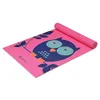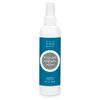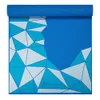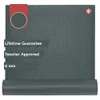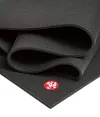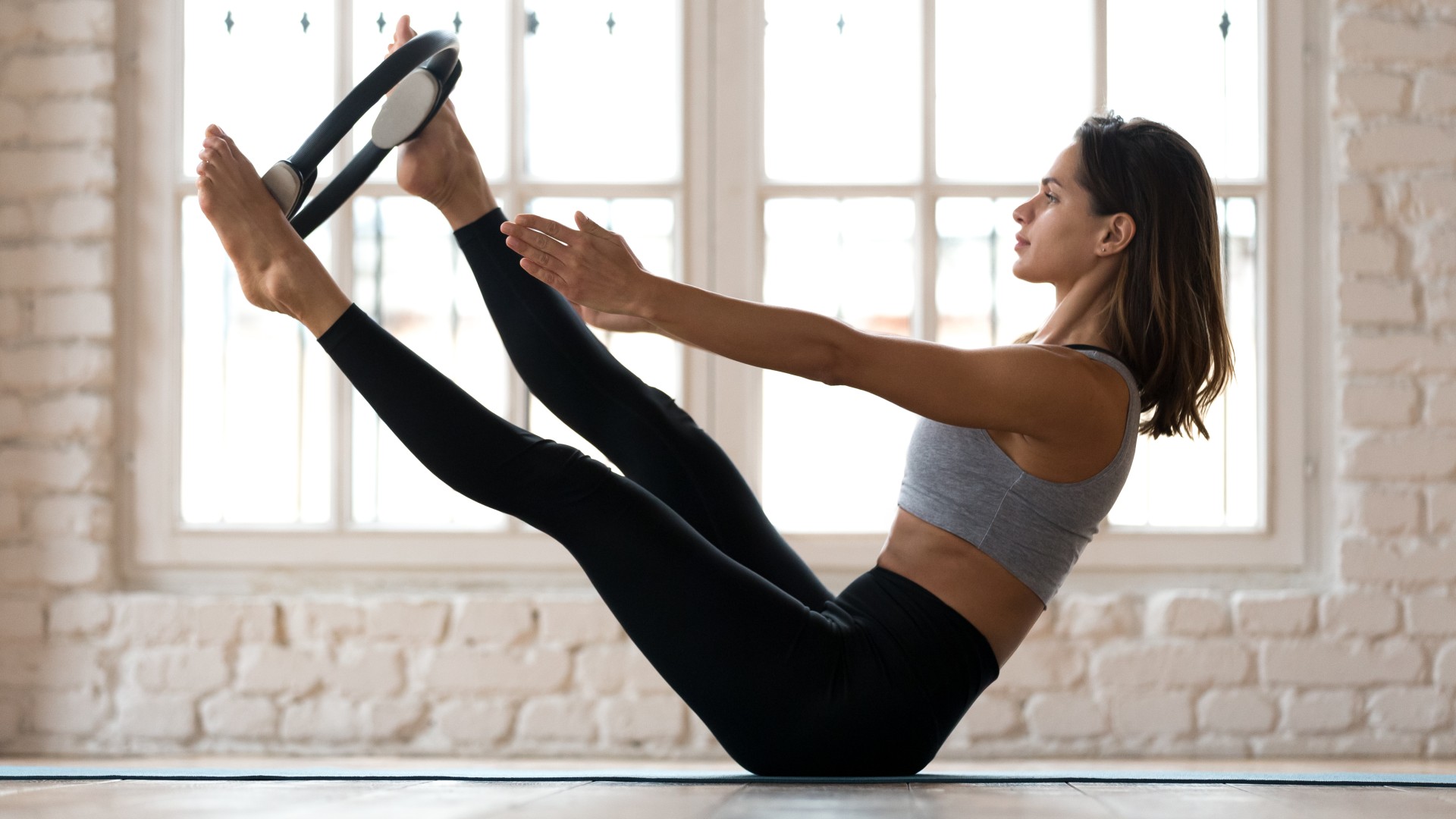
A strong core is more than just an aesthetic goal; it's essential for enhancing athletic performance, supporting lower back health, and improving posture. While we've previously highlighted some of the best ab workouts, incorporating Pilates into your routine offers a fresh and effective way to target your core muscles.
Pilates, a “mind-body” exercise system developed by Joseph Pilates in the early 20th century, is renowned for its low-impact nature and suitability for all fitness levels. This method focuses on building strength, improving posture, and enhancing structural alignment.
Research published in the Journal of Strength and Conditioning found that participants who practiced Pilates for one hour twice a week over 12 weeks experienced significant gains in abdominal endurance, upper-body strength, and hamstring flexibility. Not bad for a low-impact workout, hey?
One of the great advantages of Pilates is its versatility; it can be practiced almost anywhere with minimal equipment, such as one of the best yoga mats, resistance bands, light weights, and Pilates rings. Below, we've collected nine of the best Pilates exercises to help you strengthen your core and reap the many benefits of this timeless fitness practice.
1. One Hundreds

Often used as a warm-up, the one hundred exercise gets you into the habit of coordinating your movement to your breath. It also stabilizes your trunk and engages your abdominal muscles. Here's more information on how to do the hundreds exercise, and the best variations to try.
- Lie on your back, with your lower back pressed against the floor
- Pressing your thighs together, raise your legs at a 45-degree angle, pointing your toes
- If this is too much for your lower back, hold your legs in a tabletop position
- Engaging your core, raise your head and shoulders away from the mat, creating a C shape with your neck
- Reach your arms down alongside your body
- Pump your arms up and down for 100 counts, inhale for 5 counts, and exhale for 5 counts
2. Bicycle crunch
The bicycle, or criss-cross exercise targets the rectus abdominal muscles, the hips, and the obliques. During the exercise, you’re required to keep your legs up off the ground, which forces you to engage your lower abs, and twist, which activates your obliques. Here's more on how to do a bicycle crunch and the variations to try.
- Lie on the floor with your back flat against the ground
- Place your hands next to your head and raise your shoulders up and away from the mat
- Bend your knees and draw your legs up off the ground into a tabletop position
- Bring the right knee towards your chest as you straighten your left leg, as your right knee comes up, twist your body so your left elbow touches your right knee
- Repeat on the other side and make sure your legs and shoulders remain off the ground for the entire exercise
3. Rotating planks
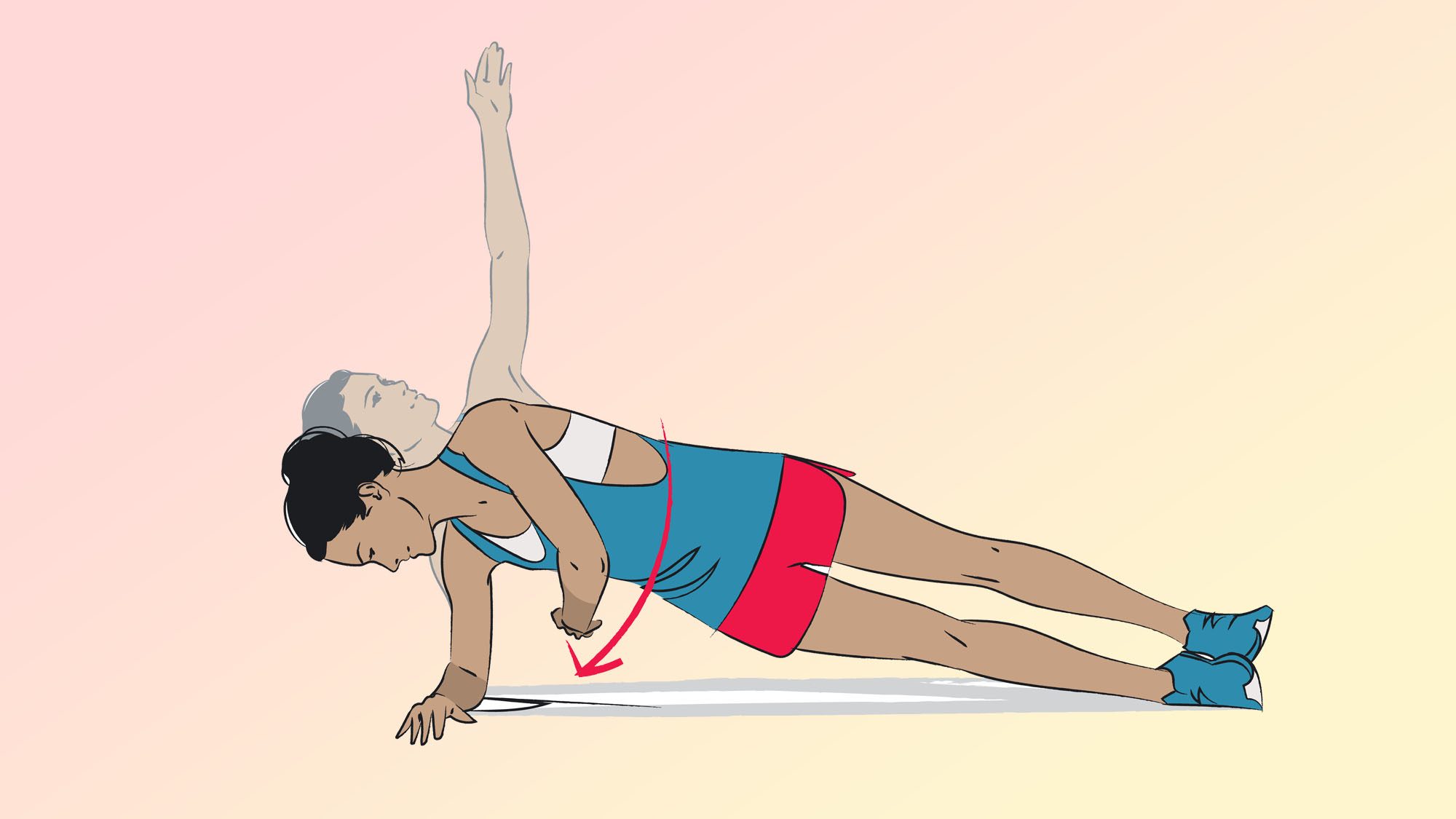
This exercise targets your oblique muscles, the abdominal muscles that run along the side of the body, as your hold a side plank, then rotate your torso.
Get instant access to breaking news, the hottest reviews, great deals and helpful tips.
- Start in a side plank position, with your feet stacked on top of one another if you’re advanced, or with your lower leg bent and your knee on the floor if you’re more of a beginner, and your weight on your elbow
- Keep your hips stacked on top of each other and raise your hand to the sky, then thread that hand underneath your torso, twisting the body around
- Then return to the starting position. Aim for 15 repetitions on each side, keeping the movement slow and controlled.
4. Toe taps

Toe taps are a classic exercise in Pilates, targeting the deep, stabilizing muscles in your core, your rectus abdominal muscles, as well as your transverse abdominals, which are the outer core muscles that pop up as a six-pack.
To make the exercise harder, tap closer to the body, or place a Pilates ball under your pelvis.
- Start with your legs in a tabletop position
- Engaging your core and keeping your knee bent, lower your right and tap your toe on the floor
- Your left leg should stay in a tabletop position
- Reverse the move and repeat on the opposite side. Aim for 15 repetitions on each side, keeping the movement slow and controlled
5. Single leg stretch
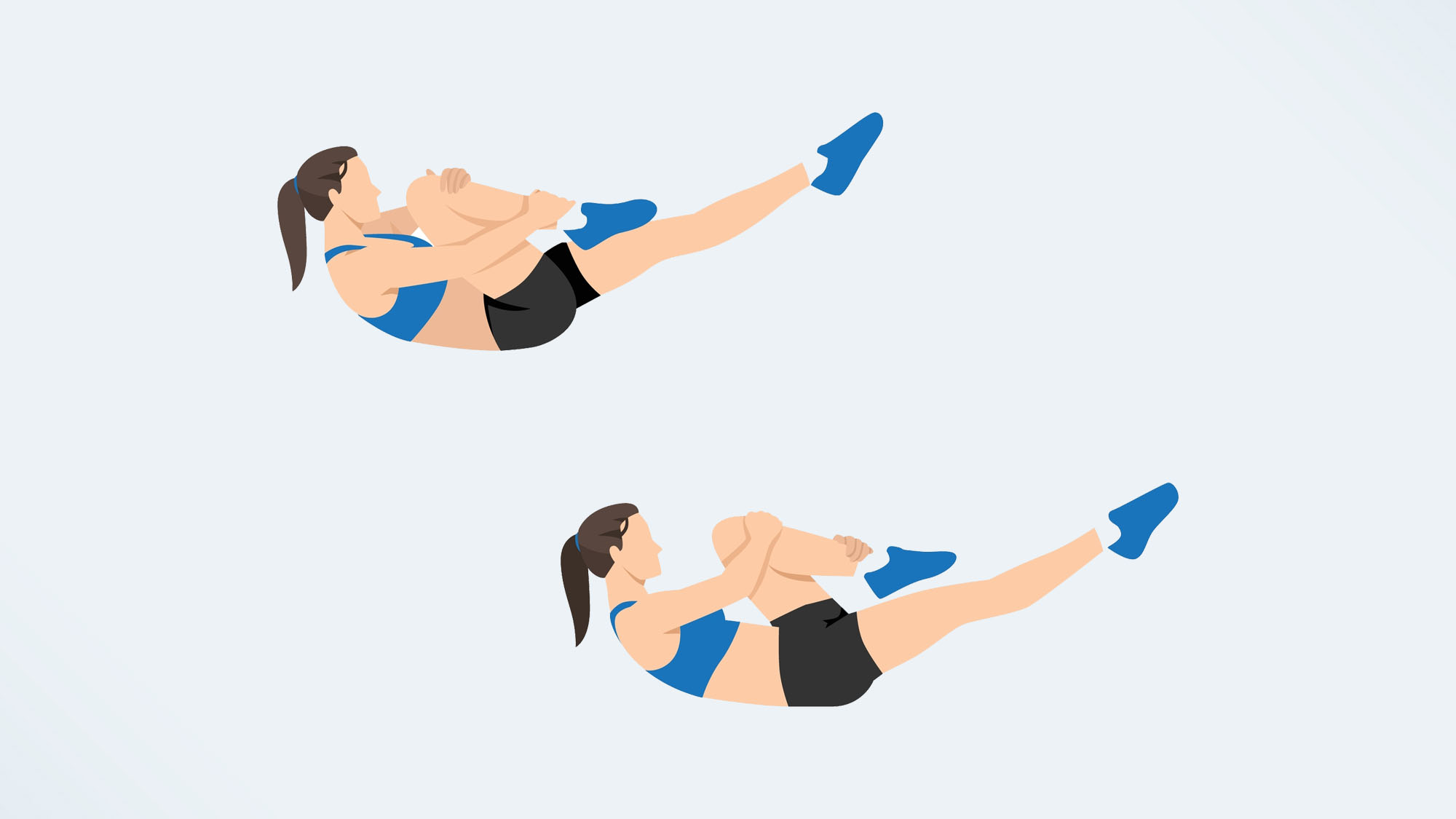
The single-leg stretch exercise in Pilates targets the lower core muscles, as well as slightly working the buttocks and legs.
- Start lying on your back, with your lower back pressed into the mat
- Raise your head and shoulders off the mat, and bring both legs into your chest and your hands on your shin
- Keeping your head raised off the mat, slowly extend one leg at a time, alternating sides
- Keep the movement slow and controlled, and keep the core engaged throughout the exercise. Aim for 30 repetitions, 15 on each side.
6. Hip dips
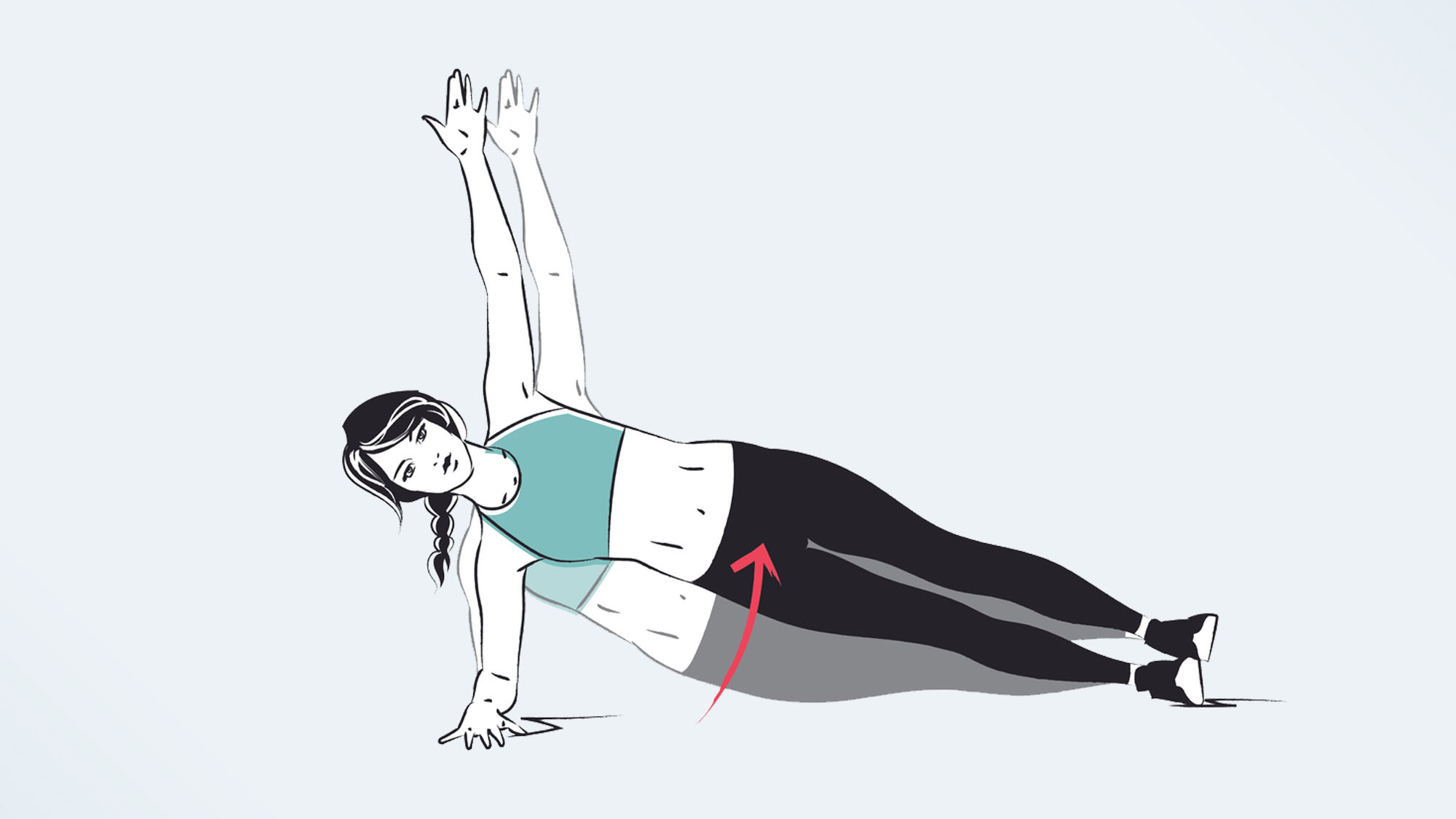
These side hip dips target the oblique muscles, which run along the outer side of the abdominal muscles.
- Start in a side plank position, with your hand, or elbow on the mat, and your hips stacked
- If you’re more advanced or looking for a challenge, stack your feet on top of one another
- If you’re a beginner, keep your lower knee on the floor. Engaging your core, dip your hips towards the ground, then raise them back up to your starting position.
7. Dead bugs
A dead bug works on stabilizing your core muscles, as well as your spine and back muscles — all important for good posture.
Here's more on how to do a dead bug, plus, what happened when our fitness editor did 100 dead bugs a day for a week and added weighted dead bugs to her workout routine.
- Start with your back and shoulders flat and heavy on the floor
- Lift your arms straight above your shoulders and your legs in a tabletop position, your knees directly over your hips
- Take a breath in and as you exhale, slowly lower and straighten your left leg and your right arm until just above the floor
- As you inhale, bring them back into the starting position. Repeat on the opposite side and you've completed one rep.
8. Scissor kicks
As well as working on your core muscles, scissor kicks target the glutes, quads, and adductor muscles.
- Lying on your back, with your lower back pressed into the floor, raise your head and neck off the ground
- Keeping your core engaged, lower your right leg to the ground, raising your left leg at the same time
- Bring your hands behind the raised leg as if you are pulling it into your chest
- Switch legs, lower your left leg to the floor, and pull your right leg into your body. Keep switching sides.
9. Mountain climbers
The easiest way to explain the movement involved in mountain climbers is running in a plank position. The key with Pilates mountain climbers is to keep the entire movement slow and controlled, keeping the abs engaged throughout.
- Start in a plank position, with your hands shoulder-width apart, your back flat, and your core engaged (think about sucking your belly button into your spine)
- Bend your left knee and bring it into your chest, as far as you can.
- Pause, then straighten your leg back to its starting position and bring your right knee in underneath your body
- Keep repeating this movement.
More from Tom's Guide
- Here's what happened when our fitness editor tried this Wall pilates workout
- This at-home Pilates workout that targets your entire core
- 8 of the best Pilates exercises for working your abs
- Abs and glutes Pilates workout.
- 3 things I wish I had known as a Pilates beginner

Jane McGuire is Tom's Guide's Fitness editor, which means she looks after everything fitness related - from running gear to yoga mats. An avid runner, Jane has tested and reviewed fitness products for the past five years, so knows what to look for when finding a good running watch or a pair of shorts with pockets big enough for your smartphone. When she's not pounding the pavements, you'll find Jane striding round the Surrey Hills, taking far too many photos of her puppy.
- Sam HopesFitness Editor and Coach
